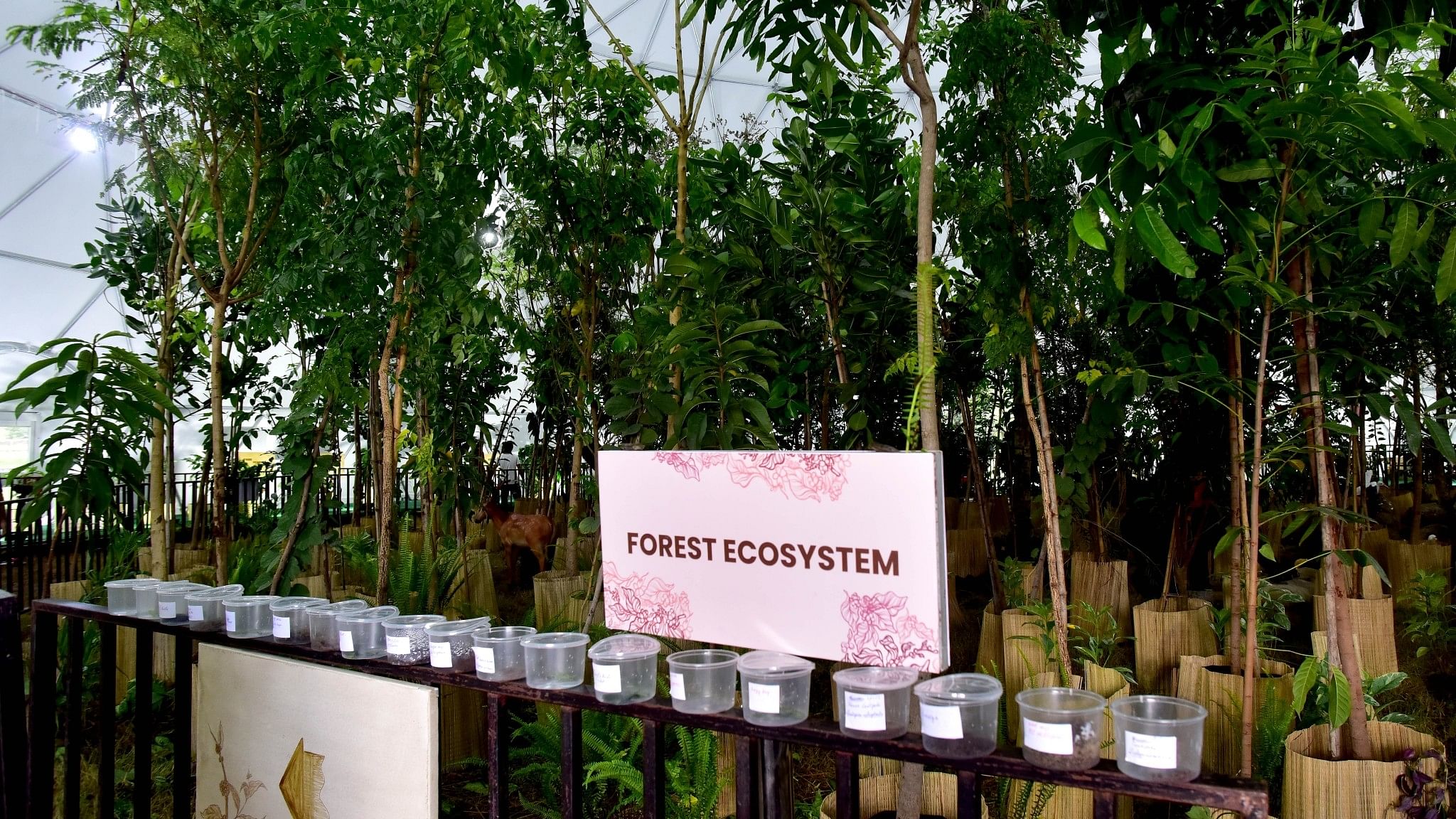
Products on display at the ongoing coffee conference in the city.
Credit: DH PHOTO/KRISHNAKUMAR P S
Environmental and economic concerns are two major challenges threatening the country's coffee industry, according to a study titled ‘Regenerative Cultivation for Sustaining and Growing India’s Coffee Industry’. The study was released by Firefly Life Sciences Pvt Ltd in the city recently in the backdrop of the ongoing coffee conference.
Regenerative agriculture aims to create harmony between the three pillars of sustainability — economic, environmental and social. The idea is to balance conservation and environmental sustainability alongside the commercial production of crops like coffee. Emphasis is placed on methods like agroforestry, reviving natural ecosystem, and managing and replenishing soil health on coffee farms. It extends beyond merely sustaining soil and natural resources, to actively restoring and reviving agricultural land.
Nandita Abreo, founder and director of Firefly Life Sciences said, “Drastic changes in climate patterns over the past decade have adversely affected India’s coffee production and crop quality. Coffee is a crop that is highly vulnerable to weather fluctuations. Therefore, sustaining coffee plantations will require an integration of climate-smart practices into cultivation. In countries like India, where a majority of production is from small holdings, adopting these practices are an urgent requirement to safeguard and augment farmer livelihoods."
Products on display at the ongoing coffee conference in the city.
India produced approximately 3,52,000 metric tonnes of coffee between 2022-23, broken into 1,00,000 and 2,52,000 tonnes of Arabica and Robusta coffee, respectively. As of 2022, India's total coffee cultivated area was more than 471 thousand hectares. Most of India’s coffee production happens on small farms sized less than 10 hectares. Nearly 90% of cultivation occurs in traditional areas like the South Indian states of Karnataka, Kerala and Tamil Nadu. Non-traditional growing areas include Andhra Pradesh, Odisha and regions in the North East.
The dry spells between 2015-2017 and unseasonal heavy rains, floods and landslides between 2018-2022 dealt successive blows to the Indian coffee growers. These extreme climatic conditions in 2022 lowered the anticipated coffee yield by an estimated 30-35%.
Several studies have indicated that the climate crisis is likely to deliver ongoing systemic shocks to production. By 2050, rising temperatures could halve the land suitable for coffee cultivation globally. Firefly’s report delves into the potential of regenerative agriculture to ensure the longevity of coffee plantations in India.